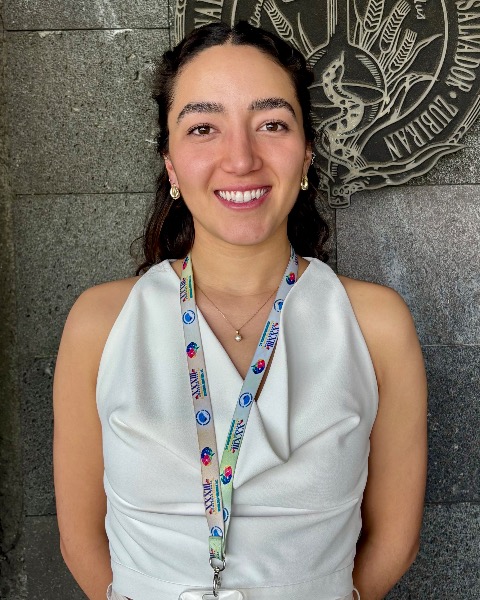Education
A hybrid model of the insular region for neurosurgical training in the laboratory
A Hybrid Model of the Insular Region for Neurosurgical Training in the Laboratory

Paloma Hurtado Cuan
Medical student
Faculty of Medicine, University of Guadalajara
Zapopan, MX
Presenting Author(s)
Introduction: Simulation training represents a keystone for mastering surgical skills. The creation of models in the laboratory is an effective tool to augment the neurosurgeons’ psychomotor expertise. Although there are some synthetic models on the market, they are usually expensive. Placenta models are considered an effective and accessible tool in simulating the insular region vasculature. We created a low-cost hybrid model for neurosurgical training in insular region approaches using biological and synthetic materials.
Methods: To create a hybrid model of the insular region, we used a 3D printed skull, prior craniectomy. We also used two human placentas prepared with silicone and paint inside the vessels. These were sutured together to form a single piece, allowing the lower placenta to simulate the insular region and the second placenta above to simulate the Sylvian fissure. These were then placed inside the previously printed skull, which was positioned on a skull clamp in the laboratory for manipulation during the neurosurgical simulation.
Results: The neurosurgeon was able to simulate the dissection of the Sylvian fissure through the first placenta, and subsequently identify the vessels of the second placenta, which simulated the vasculature of the insular region. An ultrasonic aspirator was used to imitate the resection of an insular glioma from a “window technique” approach. A large part of the placental tissue was successfully removed with adequate preservation of the vessels.
Conclusion : Neurosurgical simulation models with placentas constitute a low-cost tool that helps refine the residents’ surgical skills, leading to a shortened learning curve and error reduction. This hybrid model represents an innovative simulator, which can be replicable in second and third level health institutions.
Methods: To create a hybrid model of the insular region, we used a 3D printed skull, prior craniectomy. We also used two human placentas prepared with silicone and paint inside the vessels. These were sutured together to form a single piece, allowing the lower placenta to simulate the insular region and the second placenta above to simulate the Sylvian fissure. These were then placed inside the previously printed skull, which was positioned on a skull clamp in the laboratory for manipulation during the neurosurgical simulation.
Results: The neurosurgeon was able to simulate the dissection of the Sylvian fissure through the first placenta, and subsequently identify the vessels of the second placenta, which simulated the vasculature of the insular region. An ultrasonic aspirator was used to imitate the resection of an insular glioma from a “window technique” approach. A large part of the placental tissue was successfully removed with adequate preservation of the vessels.
Conclusion : Neurosurgical simulation models with placentas constitute a low-cost tool that helps refine the residents’ surgical skills, leading to a shortened learning curve and error reduction. This hybrid model represents an innovative simulator, which can be replicable in second and third level health institutions.

.jpg)